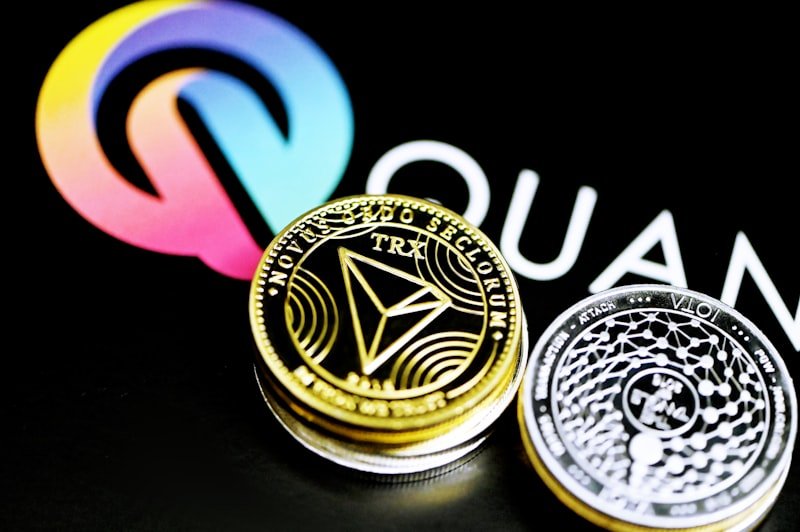What Are the Best Ways to Invest in Green Energy?

Another avenue is Exchange-Traded Funds (ETFs) focused on renewable energy. These funds pool together multiple stocks across the green energy sector, providing diversification and reducing individual stock risk. ETFs can be a strategic choice for investors looking to spread their investment across various green energy technologies and companies.

Venture capital and private equity in green energy startups present high-risk, high-reward opportunities. Investing in innovative technologies and business models can lead to substantial gains if successful, while contributing to the development of cutting-edge solutions in renewable energy.
Lastly, green bonds have gained popularity as a fixed-income investment supporting environmentally friendly projects. Issued by governments, corporations, or international organizations, these bonds finance initiatives like renewable energy infrastructure or energy-efficient buildings, offering investors a way to earn returns while making a positive impact.
Exploring the Top 5 Sustainable Investments in Green Energy
Are you considering where to invest for both profit and planet? Sustainable investments in green energy are not just about returns—they’re about shaping a cleaner future. Here are five top picks that promise both environmental impact and financial growth.
- Solar Power Projects: Harnessing the sun’s energy is more than just a trend; it’s a cornerstone of sustainable investing. Solar farms and rooftop installations offer stable returns while reducing carbon footprints.
- Wind Turbines: Wind energy continues to soar as a reliable source of renewable power. Investing in wind farms contributes to clean energy production and is bolstered by technological advancements making turbines more efficient.
- Hydroelectric Power: From dam projects to river turbines, hydroelectricity remains a robust investment. It provides a steady flow of renewable energy with minimal environmental impact beyond initial setup.
- Energy-Efficient Buildings: Investing in green-certified real estate and energy-efficient retrofits not only lowers operational costs but also attracts tenants prioritizing sustainability.
- Electric Vehicles and Charging Infrastructure: The electric vehicle revolution is driving demand for charging stations and battery technology. Investments in EV infrastructure are pivotal for reducing reliance on fossil fuels.
Each of these investments not only promises financial returns but also supports global efforts to combat climate change. By putting money into green energy, investors align their portfolios with a sustainable future while diversifying risks in a rapidly evolving energy landscape.
Ready to make an impact with your investments? Explore these sustainable opportunities that not only grow your wealth but also contribute positively to our planet’s future.
From Solar Farms to Wind Turbines: Investing in the Future of Energy
Solar farms harness the power of the sun, converting sunlight into electricity through photovoltaic panels. Picture fields of panels, quietly soaking up sunlight and transforming it into clean, renewable energy. It’s like turning sunlight into savings—a perpetual source of power that doesn’t deplete our natural resources.

But investing in renewable energy isn’t just about the technology; it’s about the ripple effects throughout society. It creates jobs in manufacturing, installation, and maintenance—jobs that can’t be outsourced overseas. It reduces our dependence on fossil fuels, mitigating the impact of climate change and improving air quality. It empowers communities to take control of their energy future, fostering resilience and sustainability.
So, why should we invest in solar farms and wind turbines? Because they represent more than just a shift in energy production—they represent a shift in mindset. They symbolize our commitment to leaving a better world for future generations, where clean air and abundant energy go hand in hand. It’s about harnessing the power of nature to build a brighter tomorrow—one where energy isn’t just sustainable; it’s inexhaustible.
Green Bonds vs. Renewable ETFs: Which Investment Is Right for You?
Investing in sustainability has become more accessible than ever, with options like Green Bonds and Renewable ETFs gaining popularity. But which one suits your investment goals best? Let’s break it down.
Green Bonds are fixed-income securities designed to finance environmentally friendly projects. They offer investors a way to support climate initiatives while earning predictable returns. These bonds are issued by governments, municipalities, or corporations committed to sustainability. Investing in Green Bonds means putting your money into projects like renewable energy development or green infrastructure.
On the other hand, Renewable ETFs (Exchange-Traded Funds) pool investments in companies focused on renewable energy sources such as solar, wind, and hydroelectric power. By buying shares in a Renewable ETF, investors gain exposure to a diversified portfolio of green energy stocks. This option appeals to those looking to capitalize on the growth potential of the renewable energy sector while spreading risk across multiple companies.
Choosing between Green Bonds and Renewable ETFs depends on your financial objectives and risk tolerance. Green Bonds offer stable returns with a clear impact on environmental projects, making them suitable for conservative investors seeking reliable income streams. In contrast, Renewable ETFs provide growth opportunities aligned with the expanding green economy, ideal for investors willing to tolerate market fluctuations for potential higher returns.
Ultimately, the decision hinges on your investment horizon, financial goals, and ethical considerations. Are you looking for steady income with a clear environmental impact, or are you more inclined towards capitalizing on the growth of renewable energy sectors? Understanding these factors will guide you towards the investment avenue that aligns best with your personal objectives.
This article aims to inform readers about the differences between Green Bonds and Renewable ETFs in a clear and engaging manner, helping them make informed investment decisions.
Profitable Paths: How to Invest Ethically in Green Energy Innovations
Firstly, understanding the landscape of green energy investments is crucial. It spans solar, wind, hydroelectric, and other emerging technologies aimed at reducing carbon footprints. These innovations not only promise financial returns but also contribute significantly to environmental conservation.
When considering where to invest, evaluating companies’ commitment to sustainability is key. Look for firms that prioritize renewable energy projects and have a track record of ethical business practices. These companies are not only aligning with global climate goals but also positioning themselves as leaders in a rapidly evolving market.
Diving deeper, consider the technological advancements within green energy sectors. Innovations like smart grids, energy storage solutions, and sustainable transportation are revolutionizing how we produce and consume energy. Investing in companies at the forefront of these innovations can yield substantial returns while driving positive change.
Moreover, ethical investing in green energy goes beyond financial metrics. It’s about supporting initiatives that foster environmental stewardship and social responsibility. By choosing investments that uphold these values, you contribute to a cleaner, more sustainable planet for future generations.
Navigating the landscape of ethical investments in green energy requires diligence and foresight. By aligning financial goals with environmental impact, investors can play a pivotal role in accelerating the transition to a greener economy. Ready to invest in a future powered by sustainability? Explore the myriad opportunities in green energy innovations today.
The Rise of Impact Investing: Making Money While Making a Difference
Impact investing operates on the principle that capital can catalyze positive change. It directs funds towards enterprises and projects that address pressing global challenges, such as climate change, poverty alleviation, and healthcare accessibility. By actively supporting businesses committed to sustainability and social equity, impact investors aim to create measurable, beneficial impacts on communities and the environment.
One of the key appeals of impact investing lies in its potential for significant returns beyond financial gains. Investors find fulfillment in knowing their funds contribute to solutions for global issues, making a tangible difference in the world. This alignment of values enhances investor satisfaction, fostering a sense of purpose alongside profit-making activities.
Moreover, impact investing spans diverse sectors, from renewable energy and affordable housing to education and healthcare innovation. Each investment decision is carefully evaluated based on its potential to deliver both financial returns and positive societal outcomes. This rigorous approach ensures that capital is deployed where it can achieve the greatest impact, leveraging market forces for social good.
As the movement gains momentum, impact investing continues to attract a wide range of investors, from institutional funds to individual philanthropists. The growing demand for transparency and accountability in finance further drives its expansion, pushing companies and funds to integrate impact metrics into their investment strategies.
Impact investing represents a paradigm shift in finance, demonstrating that profitability and social responsibility can coexist harmoniously. By prioritizing measurable impacts alongside financial returns, investors contribute to building a more sustainable and equitable future for generations to come.
